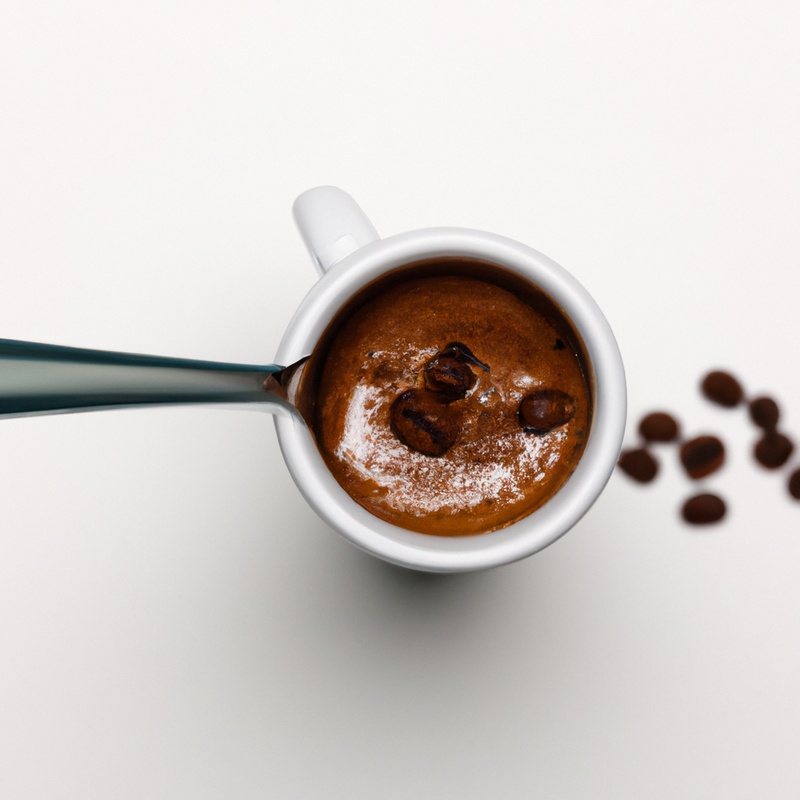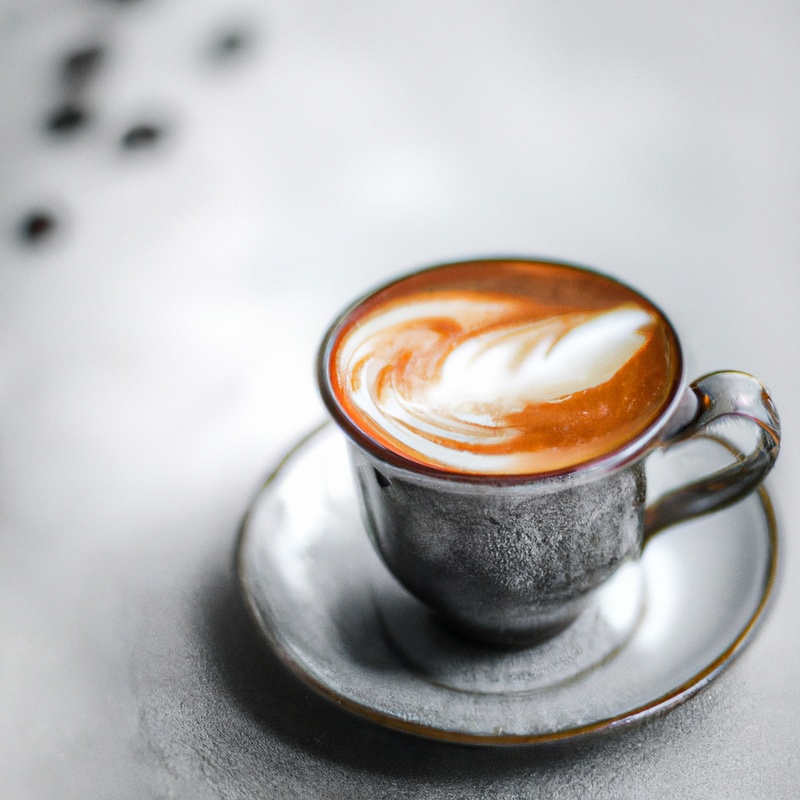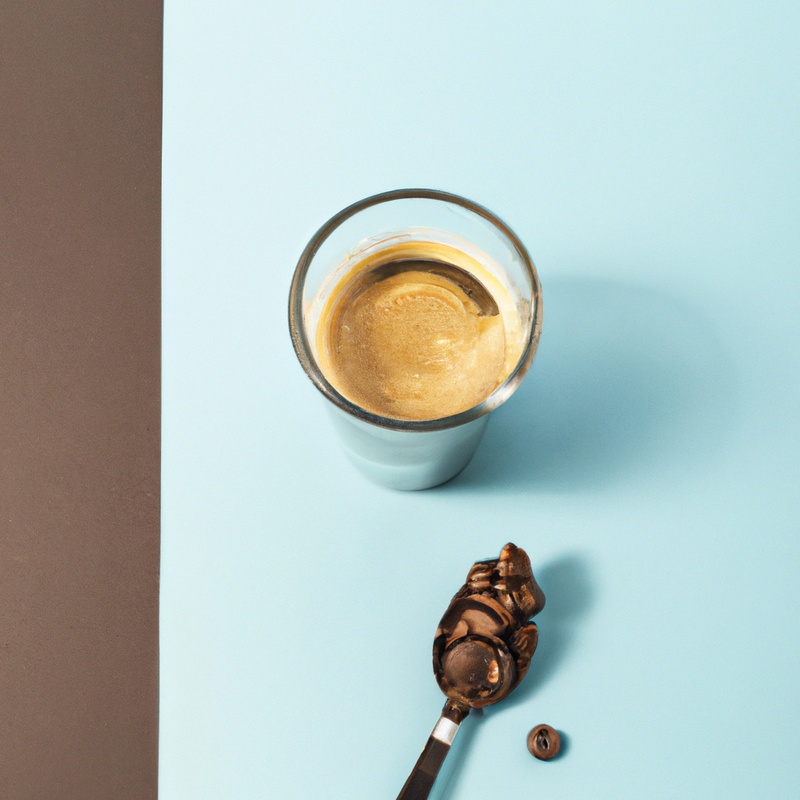Key Takeaways:
- Any type of coffee can be used for cold brew.
- Darker roasts generally result in a stronger and bolder cold brew.
- Coarse ground coffee is recommended for cold brew preparation.
- Experimenting with different coffee varieties can yield unique flavor profiles in cold brew.
Are you a coffee lover looking to dive into the world of cold brew?
Well, brace yourself because we’re about to uncover the secrets to making the perfect cup of cold brew coffee.
But first, let’s start at the beginning.
Cold brew coffee is a smooth and refreshing summer beverage that is loved by many for its low acidity and bold flavor.
It’s made by steeping coarsely ground coffee beans in cold water for an extended period of time.
But can you use any coffee for cold brew?
In this article, we’ll explore the importance of coffee beans in cold brew, and discuss the factors to consider when selecting the right coffee for this brewing method.
So, grab your coffee mug and let’s get brewing!
| Type of Coffee | Suitability for Cold Brew |
| Light Roast | Yes |
| Medium Roast | Yes |
| Dark Roast | Yes |
| Flavored Coffee | Yes, but flavor intensity may vary |
| Decaffeinated Coffee | Yes |
| Ground Coffee | Yes |
| Whole Bean Coffee | Yes, requires grinding |
What is Cold Brew Coffee?
Cold brew coffee is a type of coffee that is made by steeping coffee grounds in cold water for an extended period of time, resulting in a smooth, low-acidity beverage.
Brief Description of Cold Brew Coffee
Cold brew coffee is a popular alternative to traditional hot brewed coffee.
It is made by steeping coarsely ground coffee in cold or room temperature water for an extended period, usually around 12 to 24 hours.
This slow extraction process results in a smooth, less acidic brew that is often described as having a rich and full-bodied flavor.
Cold brew can be enjoyed on its own over ice or used as a base for refreshing iced coffee beverages.
It is a great option for those who prefer a milder and less bitter coffee experience.

How Cold Brew Coffee is Made
Cold brew coffee is made by steeping coarse ground coffee in cold water for an extended period of time, usually between 12 to 24 hours.
The steeping process extracts the flavors from the coffee beans, resulting in a smoother and less acidic brew.
After steeping, the coffee is then filtered to remove the grounds, leaving behind a concentrated cold brew coffee concentrate that can be diluted with water or milk according to personal preference.
It’s a simple and refreshing way to enjoy coffee, especially during hot summer days.
The Importance of Coffee Beans in Cold Brew
The coffee beans you choose for your cold brew play a significant role in determining the flavor and overall quality of your drink.
Flavor Profile of Coffee Beans in Cold Brew
The flavor profile of coffee beans in cold brew is influenced by several factors, including the origin, roast level, and varietal of the beans. Different regions produce distinct flavor profiles, such as fruity and floral for African coffee beans, or chocolatey and nutty for South American beans.
Lighter roasts can enhance the acidity and brightness of the coffee, while darker roasts can bring out more chocolate and caramel notes.
Experimenting with various coffee varieties can lead to a wide range of flavors in your cold brew.

Choosing the Right Coffee Beans for Cold Brew
Choosing the right coffee beans for cold brew is essential for a flavorful and smooth result.
Opt for a medium to coarse grind to avoid over-extraction and bitterness.
Look for beans that are specifically labeled as “cold brew” or “smooth” to ensure a rich, low-acidity taste.
Experiment with different origins and roasts to find your preferred flavors.
Freshness matters, so purchase whole beans and grind them just before brewing.
Remember to use a 1:4 coffee-to-water ratio and let it steep in the fridge for at least 12 hours.
Enjoy your refreshing cold brew!

Can Any Coffee be Used for Cold Brew?
Yes, you can use any coffee for cold brew as long as it is fresh and coarsely ground.
Exploring Different Coffee Beans for Cold Brew
When it comes to exploring different coffee beans for cold brew, there are a few things to consider. Firstly, you’ll want to choose beans that are specifically labeled as “suitable for cold brew.” These beans are typically roasted to bring out the flavors that work best with the cold brew method.
Secondly, consider the flavor profile you prefer.
Lighter roasts tend to have more floral and fruity notes, while darker roasts offer bolder, chocolatey flavors. Lastly, experiment with different single-origin beans or blends to find the taste that suits your palate.
Remember, everyone’s preferences can vary, so have fun exploring and finding your perfect cold brew combination!
Factors to Consider when Selecting Coffee for Cold Brew
When selecting coffee for cold brew, there are a few factors you should consider to ensure a delicious and smooth result.
Firstly, choose coffee beans that are freshly roasted and have a coarser grind.
This will help extract the flavors without the bitterness.
Secondly, opt for coffee with low acidity to achieve a smoother taste.
Additionally, consider the origin and flavor profile of the coffee beans, as they can greatly impact the final taste.
Finally, experiment with different blends and ratios to find your preferred flavor intensity.
Enjoy your homemade cold brew!
Making Cold Brew with Different Types of Coffee
When it comes to making cold brew, you have the freedom to use different types of coffee. Let’s explore using single-origin coffee and experimenting with blends and roasts for a truly customized cold brew experience.
Using Single-Origin Coffee for Cold Brew
Using single-origin coffee for cold brew is a great choice. It allows you to experience the unique flavors and characteristics of a specific region or farm.
Single-origin coffee offers more complexity and depth to your cold brew, making it a truly enjoyable and flavorful beverage.
Experiment with different single-origin coffees to find your favorite flavor profile. Remember to grind the coffee coarse before steeping it in cold water for 12 to 24 hours.
Experimenting with Blends and Roasts for Cold Brew
Experimenting with different blends and roasts is a fun way to explore the world of cold brew. Each coffee bean has its own unique flavor profile, and the brewing process can bring out different characteristics.
Try a light roast for a more delicate and fruity taste, or go for a dark roast for a bolder and richer flavor.
Don’t be afraid to mix different beans together to create your own custom blend. The possibilities are endless, so get creative and see what works best for your taste buds!
Recommendations for Cold Brew Coffee
For a great cold brew coffee, try using popular coffee beans or specialty coffee beans for an enhanced experience.
Popular Coffee Beans for Cold Brew
Popular coffee beans for cold brew include Colombian, Ethiopian, Brazilian, and Peruvian varieties. Colombian beans offer a well-balanced flavor profile with a hint of nuttiness.
Ethiopian coffee beans provide fruity and floral notes.
Brazilian beans offer a smooth and chocolatey taste, while Peruvian beans have a milder, nutty flavor. Experiment with these popular options to find your favorite cold brew combination.
Happy brewing!
Specialty Coffee Beans for Enhanced Cold Brew Experience
Specialty coffee beans can greatly enhance your cold brew experience. These beans are carefully selected and roasted to bring out their unique flavors and aromas.
Look for single-origin beans from reputable sources, as they tend to have more distinct flavor profiles.
Consider trying different varieties, such as Ethiopian or Colombian, to discover your preference. Opt for a medium to dark roast for a richer and more robust cold brew.
Lastly, grind the beans right before brewing to preserve freshness and ensure a flavorful cold brew.
Happy brewing!
Frequently Asked Questions about Using Coffee for Cold Brew
Can I use flavored coffee for cold brew?
Yes, you can definitely use flavored coffee for cold brew! The great thing about cold brew is that it can be made with any type of coffee, including flavored ones. The cold brewing process brings out the flavors in the coffee, making it smooth and rich.
So go ahead and experiment with your favorite flavored coffee to create a delicious and refreshing cold brew.
Just keep in mind that the flavor may be more subtle compared to hot brewing methods. Enjoy!
Does the grind size of coffee beans matter in cold brew?
Yes, the grind size of coffee beans does matter in cold brew.
A coarser grind size is typically preferred for cold brew because it allows for a slower extraction process, resulting in a smoother and less acidic brew.
Finer grinds can lead to over-extraction and a more bitter taste.
So, if you want to make the best cold brew, go for a coarser grind size.
Can I use pre-ground coffee for cold brew?
Yes, you can definitely use pre-ground coffee for cold brew! Using pre-ground coffee is convenient and time-saving because you don’t have to grind the beans yourself.
Just make sure the coffee is coarse enough to prevent over-extraction and a bitter taste.
If you find that the cold brew is too weak, you can always adjust the coffee-to-water ratio to your liking.
Experiment and enjoy the process!
Final Verdict
The type of coffee beans you use for cold brew can greatly impact the flavor and overall experience.
While any coffee can technically be used for cold brew, it is best to choose beans with a smooth and low acidity profile to achieve a rich and mellow taste.
Single-origin coffees offer unique flavor profiles, while blends and darker roasts can add complexity.
Ultimately, selecting high-quality coffee beans and experimenting with different varieties will help you create the perfect cold brew to suit your preferences.
So go ahead, explore the world of coffee and elevate your cold brew game!
